You may have heard of the term ‘runner’s body’ in the fitness community.
Depending on what camp you’re in when it comes to exercise, it will either have positive or negative connotations for you.
If you’re a long distance runner, don’t let the gym bunnies convince you that a runner’s body is a bad thing!
After all, running is one of the most physically demanding sports out there.
It burns the most calories per hour compared to other endurance activities like cycling and swimming.
If you run long distances regularly then you’ll know how much you rely on your superhuman endurance and stamina levels to get you through a run.
When you run for miles and miles, this can have a huge impact on your physique and body type.
But what exactly is a distance runner’s body and what does it look like? What are the characteristics of a distance runner’s body?
In this guide we’ll explore:
- What is a distance runner’s body?
- What are the benefits of a distance runner’s body?
- What does a distance runner’s body look like?
- What are the characteristics of a distance runner’s body?
- What are the different types of runner’s body?
- Runner’s body vs gym body
- Running vs lifting
- How to get a distance runner’s body: 6 training tips
Ready?
Let’s get started!

What is a distance runner’s body?
A distance runner’s body is typically characterised by a lean and thin physique that is built for endurance.
Studies have shown that compared with larger and more muscular body sizes, runners that are lean and thin, especially at elite level, tend to perform better over long distances.
It’s worth pointing out that runners come in all shapes and sizes and there isn’t one ‘perfect’ body type when it comes to running.
But for the purposes of this guide, we’ll look at a distance runner’s body and its benefits.
Related: How to increase running stamina and endurance: 6 actionable tips
What are the benefits of a distance runner’s body?
There are a range of benefits of having a distance runner’s body.
A thin and lean physique, compared with a larger body size, for example, helps to:
- Enhance endurance performance
- Reduce the amount of ground forces when running
- Dissipate heat more effectively
- Lower air drag when running
Related: Running for weight loss: The most effective running workouts to help you lose weight
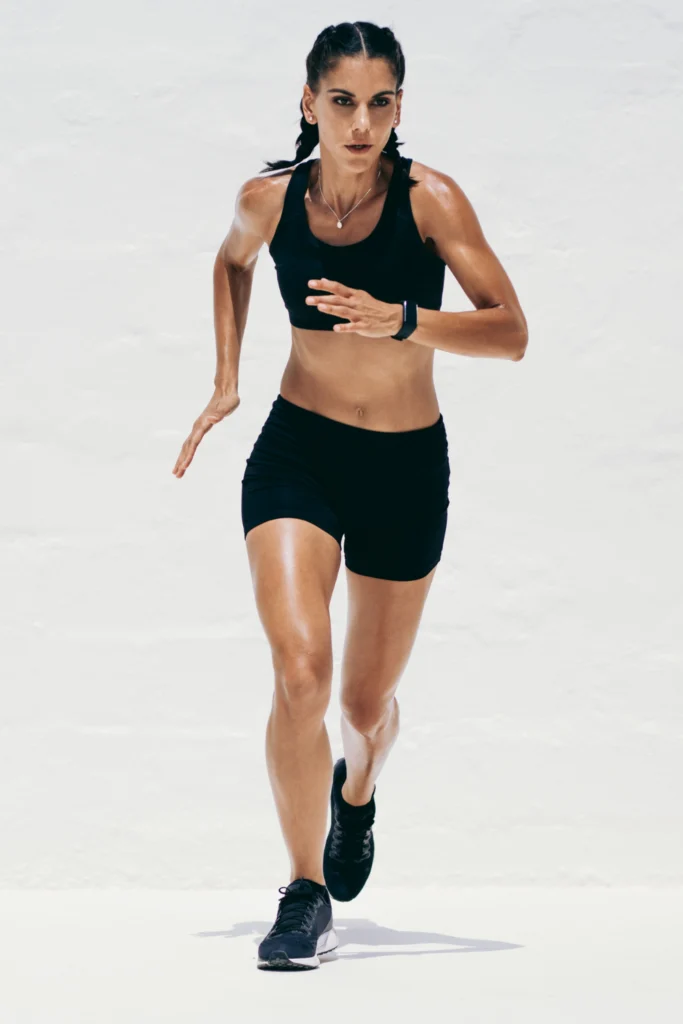
What does a distance runner’s body look like?
A distance runner’s body is typically lean and thin, with toned lower legs and a slim upper body.
It is built for endurance and is hallmarked by a low body mass and low body fat percentage.
In 2012 the NPR released an infographic showing how a distance runner’s body has changed over the last several decades.
They found that while some runners are shorter and some are taller, in all cases distance runners are extremely light.
This is because extra weight and mass is detrimental to running performance, especially over long distances.
As an example, let’s look at the physique of British long distance runner Paula Radcliffe who is considered one of the best long distance athletes of her generation.
You will see that her body has many of the characteristics of a distance runner’s body. More on those in the next section.
Related: Why do my legs itch when I run? How to prevent runner’s itch
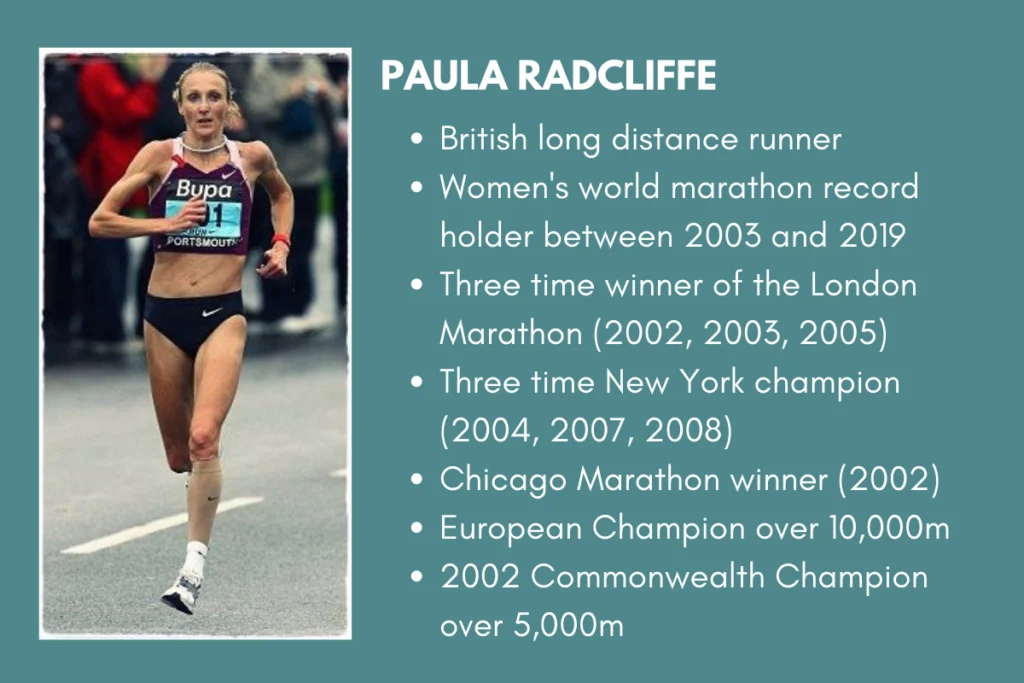
Related: How to fix a saggy butt: 5 exercises to lift your butt
What are the characteristics of a distance runner’s body?
Distance running brings about many physical, physiological and biomechanical changes.
The key characteristics of a distance runner’s body are as follows:
- Low body fat percentage
- Low body mass
- Low resting heart rate
- High bone density
- High VO2 Max
- High lactate threshold
- High percentage of slow twitch muscle fibres
#1 Low body fat percentage
A low body fat percentage is normally associated with improved running performance and better running times.
According to a 2012 study, body fat percentage and high intensity speed training have the most significant impact on race results.
They can be used as predictors of completion times in half marathon, marathon and ultra-marathon distances.
It’s worth pointing out that your body composition and body fat percentage will be dependent on the types of running that you currently do.
But if you do run long distances, lowering your body fat percentage and combining this with high intensity speed training can help you achieve your best race times.
#2 Low body mass
Various studies have shown that having a low body mass is beneficial when running long distances.
A 2014 study showed that your BMI and body mass can be used as a performance indicator in short and long distance events.
The study shows that when it comes to distance running like marathon running, a smaller stature and mass could provide some benefits.
Gravity is a major force to overcome when running, and excess mass is detrimental to running performance, especially over long distances.
Smaller and leaner runners have an advantage.
This is because of reduced ground forces and a lower air drag when they run, compared with runners with a larger body size.
The key takeaway? A lower body mass means lower amounts of muscular effort and energy expenditure are required during long distance runs.
#3 Low resting heart rate
A distance runner will often have a lower resting heart rate compared with other people.
Endurance exercise like running strengthens the heart muscles.
This means with every pump, greater amounts of blood and oxygen are distributed to the muscles.
Therefore meaning the heart beats fewer times per minute compared to non-athletes.
Related: What does running do for your body? 10 benefits of running

#4 High bone density
Bone density is essentially how strong your bones are.
Distance runners tend to have a high bone density and stronger bones compared with non-athletes.
A 2019 study concluded that long distance running increases bone formation.
The study also found that there is a correlation between the strength of the workload and bone formation.
When the strength of the workload is low, there is no effect on the bone metabolism.
However, if more than a certain amount of load is applied, bone formation can be accelerated.
The study cautioned that if a higher load is applied and exceeds a certain threshold the bone tissue can be impaired.
#5 High VO2 Max
Distance runners tend to have a greater VO2 Max (Volume Oxygen Maximum), that is their ability to consume the maximum rate of oxygen during exercise.
The greater your VO2 Max, the more oxygen your body can consume and use this oxygen effectively, the higher your capacity for exercise and endurance activities like long distance running.
#6 High lactate threshold
A key skill for distance runners is to maintain a certain pace over a prolonged period of time without succumbing to tiredness and fatigue.
Your lactate threshold (LT) is the level at which the intensity of exercise causes lactate to accumulate in the blood at a faster rate than it can be removed.
It can be used to determine how to train and what sort of pace you can maintain during endurance activities like running.
According to a 1985 study, lactate threshold is the most reliable indicator of endurance performance and distance runners tend to have a higher lactate threshold.
Compared with an average person who reaches their lactate threshold at 50-60% of their VO2 Max:
- Recreational endurance runners can expect to reach their lactate threshold at 65-80% of their VO2 Max.
- Elite endurance runners can expect to reach their lactate threshold at 85-95% of their VO2 Max.
#7 High percentage of slow twitch muscle fibres
Your muscles are made up of two types of muscle fibres: slow twitch and fast twitch.
- Slow twitch fibres (also known as type I fibres) provide smaller movements and postural control and are more resistant to fatigue. They are mainly used for endurance activities like marathon running and cycling which require prolonged aerobic exercise.
- Fast twitch fibres (also known as type II fibres) provide bigger and more powerful forces but over shorter distances and they fatigue quickly. They are predominantly used for activities like sprinting and weightlifting which require greater and quicker force.
A marathon runner will have about 70-80% of slow twitch muscle fibres due to the very nature of long distance running.
Whereas a 100m sprinter will have roughly 70-75% of fast twitch muscle fibres.
Related: Running VO2 Max charts: What is good VO2 Max for my age and gender?
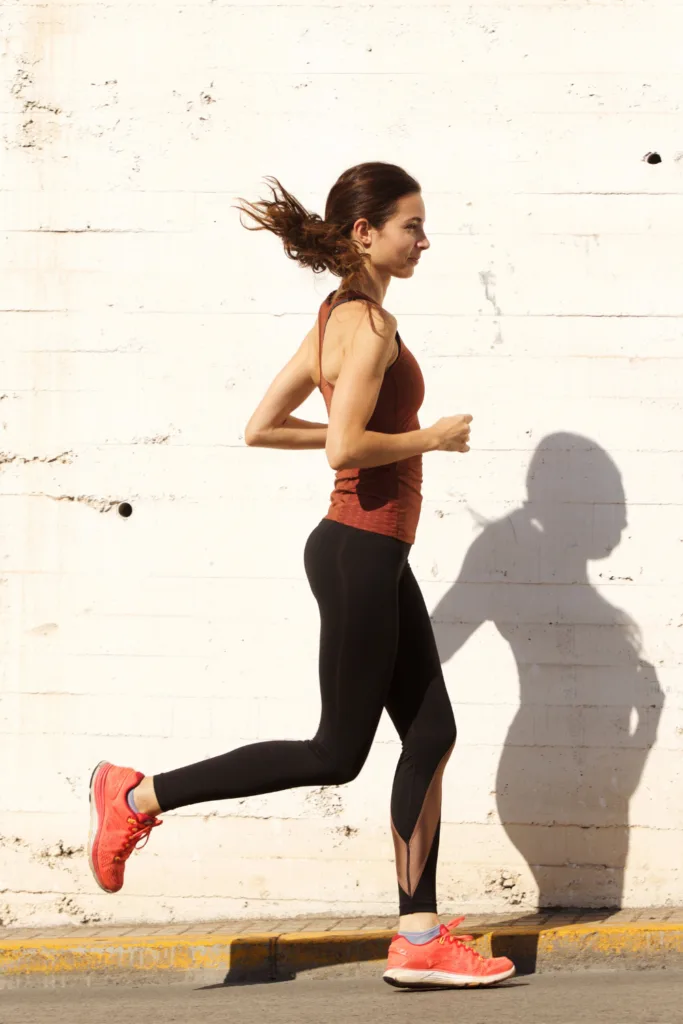
What are the different types of runner’s body?
We have focused mainly on a distance runner’s body in this guide, but there are other forms of running which mean runners can have different body types.
A sprinter’s body, for example, is lean, muscular and powerful.
This body type is biomechanically designed for short bursts of power, instead of prolonged steady efforts as seen in distance running.
Elite sprinters are heavier due to their need for higher energy outputs in a short amount of time.
The energy requirements for a 100m sprint, for example, are completely different to those of a 10,000m run.
In the example below you can clearly see the differences between Australian long distance runner Sinead Diver and Jamaican 100m sprinter Elaine Thompson-Herah.
While Diver has a long and lean frame, Thompson-Herah has a more muscular and naturally athletic build.
Related: Should you work out on your period? 6 best exercises to do on your period
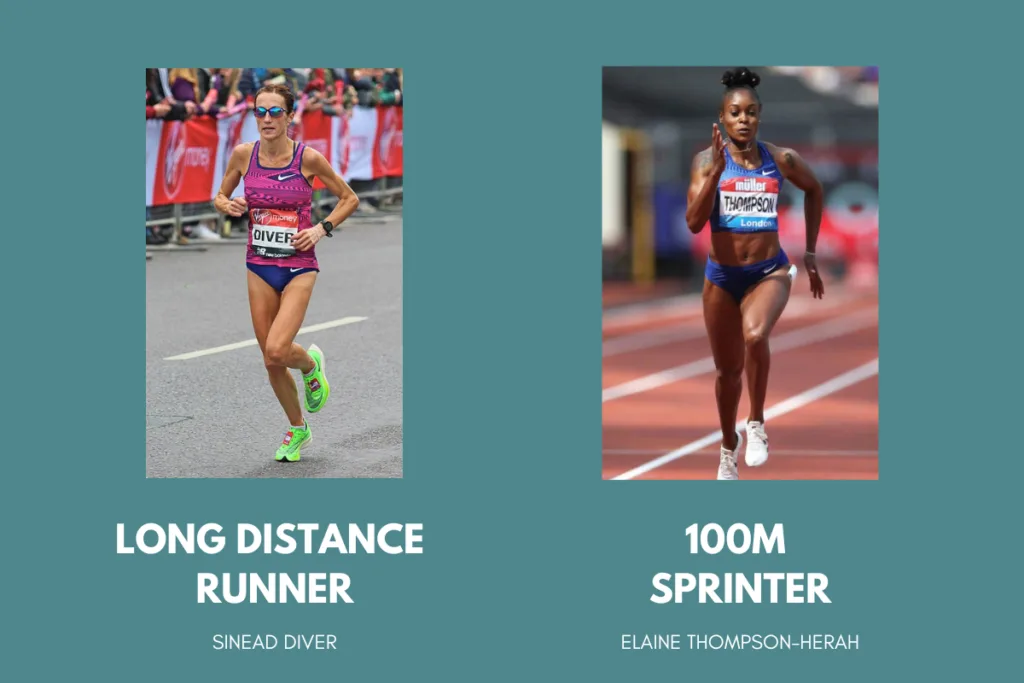
Runner’s body vs gym body
You may be wondering: “What is the difference between a runner’s body and a ‘gym body’?”
And more importantly, which body type is better?
The truth is one body type isn’t better than the other.
They both have their own set of unique characteristics and benefits and serve different purposes when it comes to exercise.
If we were to pinpoint the differences between a runner’s body and a ‘gym body’, it’s important to understand the three different body types.
These are:
- Ectomorph
- Endomorph
- Mesomorph
In the infographic below you will see the physical differences between each body type.
Distance runners tend to have body similar to that of an ectomorph.
Whereas gym goers tend to have a body that is typically associated with the endomorph and mesomorph body types alike.
Related: What does running do for your body? 10 benefits of running
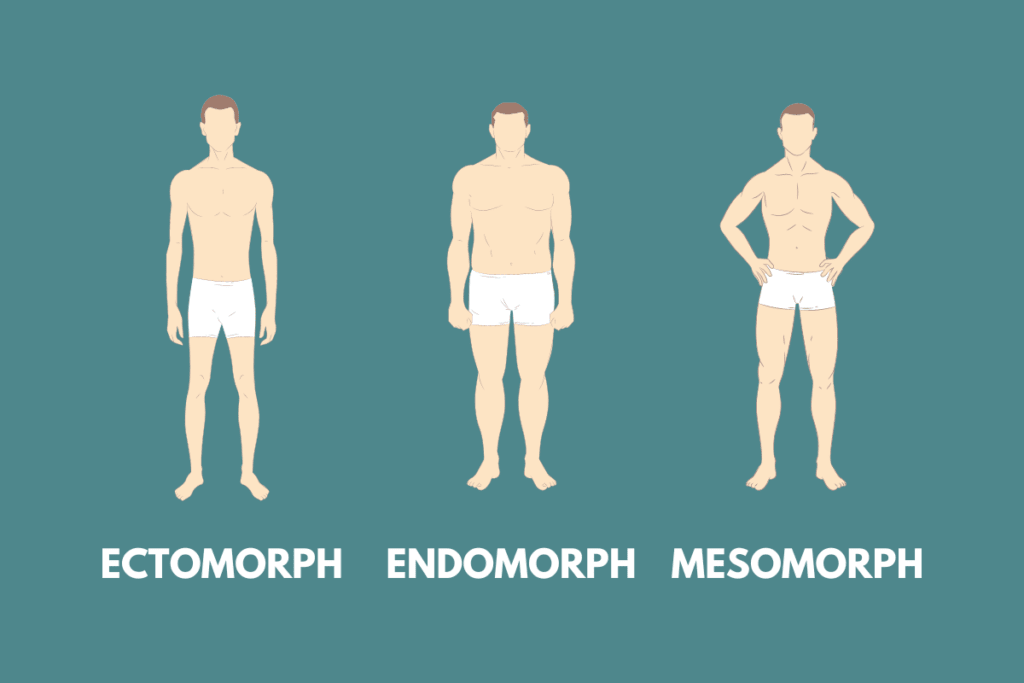
Here is a breakdown of each body type:
Ectomorph body type characteristics:
- Long and lean
- Thin frame
- Finds it difficult to build muscle and fat
- Fast metabolism
Endomorph body type characteristics:
- Stocky build
- Wide frame
- Finds it difficult to stay lean
- Slow metabolism
Mesomorph body type characteristics:
- Can be lean and muscular simultaneously
- Natural athletic build with well-defined muscles
- Finds it easy to build muscle and lose fat
Related: Do you burn more calories on your period? Your common questions answered
Running vs lifting
If you have the body type that is typically associated with long distance running (i.e. the ectomorph body type), then you will find it difficult to gain muscle as well as fat.
In order to strengthen the key running muscles that you use the most, you need to be doing ancillary work like strength training and lifting weights that complement your running.
Strength training programs that focuses on compound movements (e.g. all body movements that use multiple muscle groups) are recommended for runners.
Many of the most successful distance runners will include forms of strength training in their training routine because running alone will only get you so far.
Running is great for improving your endurance, stamina and cardiovascular fitness.
Whereas crucially lifting weights is great for improving your muscular strength and power and helps to drastically reduce the risk of injury.
The key takeaway? You need to be doing both running and activities like strength training to become a stronger and more powerful runner.
Related: Is running good for you? 12 amazing benefits of running for the body and mind
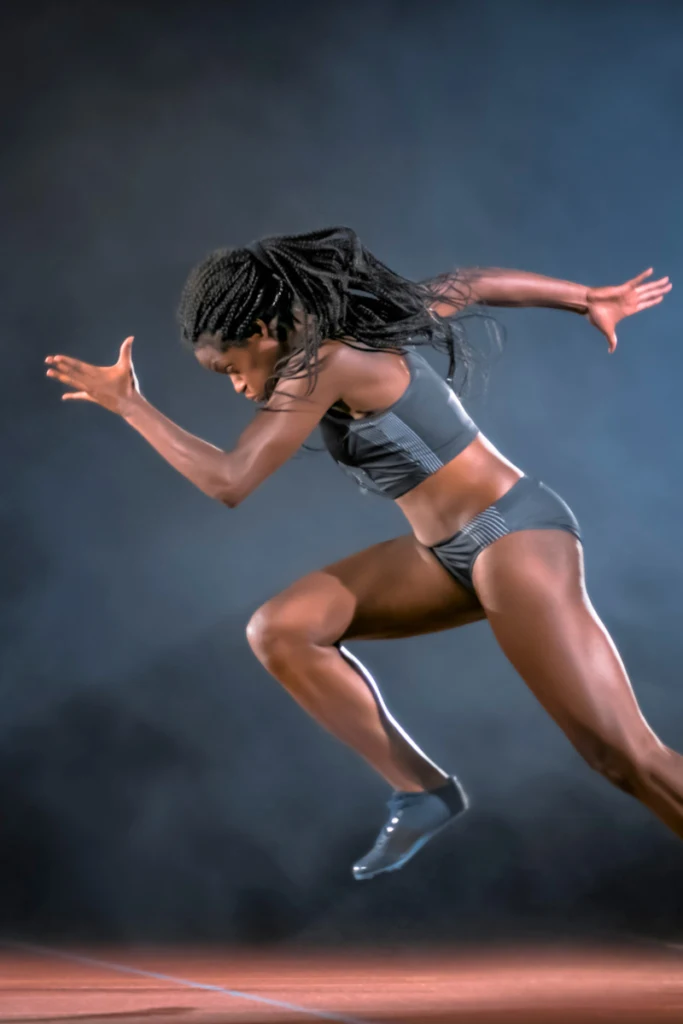
How to get a distance runner’s body: 6 training tips
Now you know all about a runner’s body, here are 6 training tips to help you achieve this physique.
#1 Run more often
The best way to get a runner’s body is to run and run more often!
However, this doesn’t mean you should run every day of the week.
If you’re new to running, then you’ll need to take things slowly.
Follow a training plan that suits your individual needs.
The Couch to 5k training plan is great for beginners and gets you into a habit of running more regularly.
There are also beginner 5k training plans and beginner 10k training plans out there to help you.
#2 Build your endurance and stamina
Endurance and stamina are the hallmarks of a distance runner and are incredibly important when it comes to attaining a runner’s body.
Long distance running is one of the best ways to improve your endurance and stamina.
However, you need to build a solid foundation before you can go on to run longer distances without getting tired after the first few miles.
It is recommended you run between 3 to 4 times a week and cover between 3 to 5 miles per week to begin with to really see improvements in your endurance and stamina.
As long as you continue to be consistent with your training and progress at regular intervals, you will soon see benefits.
#3 Lose weight
A distance runner’s body is typically lean and thin.
The less weight you are carrying, the more effective your performance will be over longer distances.
It takes less energy to move a smaller body, so you have more to spend on endurance.
To achieve a distance runner’s body, you will need to bring down your body fat percentage.
The good news is running is a great way to burn calories, but the number of calories you are able to burn per mile will depend on a number of factors.
These include your age, gender, height, weight, heart rate and speed.
There are various tools out there like calorie calculators to help you determine how many calories you can expect to burn at rest and during exercise.
If you run consistently and adopt healthier eating habits, you will soon burn calories and lose weight.

#4 Improve your diet
It’s no secret that runners are hungry all the time!
Your nutritional habits are a huge factor when it comes to achieving a distance runner’s physique.
After all, there’s no use running for miles and miles each week if you’re not eating the right types of food.
You need to ensure you’re getting all the essential micro and macronutrients in your diet, including plenty of carbohydrates for energy and lots of protein to help you recover after a long run.
Avoid processed foods, refined foods, sugary foods and ensure you are not oversizing your portions.
#5 Strength train
Strength training (also known as resistance training) is incredibly important when it comes to improving your overall fitness and running performance.
You may think that distance running and obtaining a distance runner’s body is all about pounding the pavement.
Contrary to this popular belief, it’s essential you include ancillary work like strength training in your training routine to ensure you stay strong and healthy as a runner.
Strength training like lifting weights helps you build stronger muscles, connective tissues and ligaments.
This is crucial to help reduce the risk of common running injuries like IT band syndrome and runner’s knee.
The best strength exercises for runners are those that focus on:
- Full body movements (movements that use your whole body)
- Unilateral movements (movements that use a single arm or leg)
- Core strength
You can find out more in our complete strength training guide for runners.
#6 Cross train
Cross training is a great way to add variety into your training plan, especially when it comes to training for long distances like the half marathon and marathon.
Popular cross training activities for long distance runners include walking, swimming, cycling and yoga.
Many distance runners view cross training as a great form of ‘active recovery’ that they can do on their rest days.
However the key is not to push yourself too hard on your rest days as they are designed to provide just that – rest!
Related: Does running make your butt bigger? 20 butt building exercises
- 5 things I wish I’d known before returning to running - March 3, 2024
- Running 20 minutes a day: Benefits + how to start - January 27, 2024
- How to run your first 2 hour half marathon - January 16, 2024
